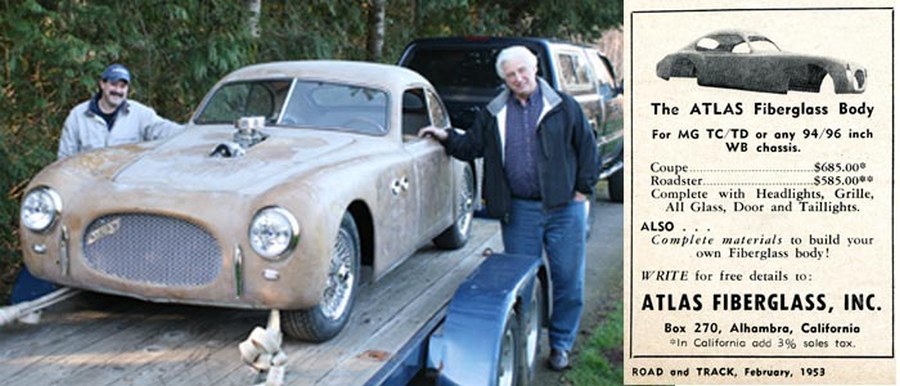
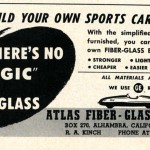
Earliest Ad We’ve Found So Far – December 1952 Auto Speed and Sport – No Mention is Made of the Atlas Body – And Only Roy Kinch’s Name Appears
Hi Gang…
I recently received the restoration pictures that Stan Crawford sent of his Atlas Swallow. This is going to be one fantastic car when it’s finished. I know he’s on the right track because even though it was in mid-restoration, the Petersen Automotive Museum added it to their “Fantasies in Fiberglass” exhibit which continues this year (2010) thru early October. That’s quite a nice compliment for Stan and his Atlas!
Stan’s car looks great in the museum. Leslie Kendall, Curator of the Petersen Automotive Museum, wanted to put their own 1948 Cisitalia 202 Coupe on display and show it next to one of the Bill Burke / Mickey Thompson / Roy Kinch Atlas Swallows. Checkout the pictures at the bottom of this story of the Cisitalia and Atlas next to each other at the Petersen – it’s a fantastic display (nicely done Leslie!)
History of Stan’s Atlas:
Stan bought the car from his friend Ray South in the summer of 2009 – not that long ago. Ray owned the car for 20+ years, and had owned Glasspar G2’s, Woodill Wildfires, and other fiberglass specials too. In fact, Stan still has an article about Ray written in the early 1990’s that he’s forwarding to me. The article tells the story of Ray South and his cars. I’m looking forward to reading it when it arrives.
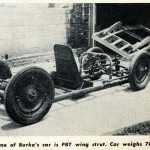
Burke Liked to Use PBY Aircraft Tubing for the Frames of His Cars – Here’s a Streamliner He Was Building Using This Tubing – As Shown in Hot Rod – September 1952
Although Ray South had the car for quite a long time, no history came with the car – but there were a few clues. One distinguishing feature is the absence of a driver’s door. From close inspection of the inside of the body, no door had ever been cut. This is typical of early fiberglass specials. All of the first Glasspar G2’s had just one passenger door – like Stan’s Atlas. My Maverick Sportster just has a passenger door. What usually happened is that as time progressed, the early specials moved from having no doors or just a passenger door – to both a driver’s and passenger door.
Remember…this was an early time in using fiberglass, so it makes sense. As the company’s expertise increased, so did their ability to fabricate and install doors successfully in the bodies they were producing. As for Stan’s Atlas, if we find evidence of a vintage Allied with a passenger door only in the 1950’s literature – odds are it will be an early Atlas (early 1953) and it might even be Stan’s car. So….the hunt thru our old magazine collection for the history of Stan’s Atlas is on.
Another hint of the car’s history is the instrument layout on the dashboard. Dashboards tend to be like fingerprints on old specials. To the extent we can find a vintage picture of a car, it may very well match the remnants of a dashboard of a car that has survived thru 2010. Finally, there was a crude hole cut into the hood (drilled with holes) for a hood scoop, and the motor mounts were still in place under the hood for a Ford Flathead V8. The last distinguishing characteristic on Stan’s Atlas was the location of the gas cap – center rear of the car. Gas cap locations were determined by the original builders, so this may help identify or match the car to vintage pictures giving us its long lost heritage.
The Restoration Begins:
As does any conscientious owner, Stan documented the car with tons of photographs, and then immersed himself with learning about the car and the history of Atlas/Allied. And why not start by learning about the frame – which is exactly what he did with the help of fiberglass friend – and former Allied Falcon owner (99″ wheelbase Allied) Terry Buffum. Terry owned a 99″ wheelbase Allied Falcon for many years and became good friends with Bill Burke at that time too. Burke had told him that he built frames for many of his Allied cars – but not all of them. Many Atlas cars were sold with body and floor only – no frame included. It depended on what the customer wanted, Burke recently told me.
When Bill did build frames, he used lightweight aircraft tubing – wing struts specifically – that were used for World War II PBY aircraft (click here to read more about the history of the PBY Catalina airplane) This wasn’t the first time I had heard this or seen this. I’ve found this reference to Burke’s building technique in the magazines of the day (for example, 1952, September Hot Rod – see picture and caption above) and I learned this directly from Bill Burke too – as I got to know him as he helped guide us in the recreation of his 1946 Belly Tank – the first one built to run at the dry lakes (click here for more information).
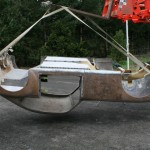
Stan Really Understands What a “Body Off / Frame Up” Restoration Means. Remember Stan….Rubber Side “Down” *wink*
Bill continued to stress with me – conversation after conversation – how he factored in the weight of the vehicle every time. His frames used just the right amount of steel – and no more. He wanted a frame that was lightweight and strong for everything he built – for himself and his customers.
Funny thing….I had never seen an Allied frame before. There’s much discussion I’ve been privy to about the frames being built but until Stan’s car – no photos. Kudos to Stan for taking such great shots of his car during restoration. You can clearly see from the photos the simple construction of the frame – just what was needed and no more. And you can see the PBY wing strut tubing. This is special tubing – it’s teardrop shaped – and lightweight too.
If you carefully inspect the pictures below, and the vintage picture I included of a streamliner frame he was building in 1952 (Hot Rod, September 1952) – you can see that the tubing is not circular nor oval – it’s teardrop shaped to minimize aerodynamic drag (if oriented in the correct direction when used on an airplane).
Stan’s comments on the frame:
“At first glance, the frame looks sparse – there’s little room for legs and feet in cockpit, and it’s butt and gas welded – not very sophisticated. However, I think it’s a close relative to the frame that Burke must have used on his Atlas car at Bonneville. During restoration we added some stiffeners to strengthen the frame – triangular support in the corners. That’ s all the modifications we made to the frame.
In September 2009, I had been working with Leslie Kendall, Curator of the Petersen Automotive Museum to identify cars that might be nice additions to their fiberglass exhibit planned for 2010. One of Leslie’s ideas was to get an Allied for display and place it alongside the Petersen museum’s own 1948 Cisitalia 202 Coupe. We had staged a similar“meeting of the cars” at the end of the day at the Amelia Island Concours d’Elegance, but that was just for a few minutes to take some pictures. A more permanent comparison would be even better!
I looked thru my contacts with our Allied group and there were several choices of cars – but only one restored that is the 94″ wheelbase copy / version of the Cisitalia. Some of the larger 99″ wheelbase cars are restored, but I’m aware of only Darren Crispin’s Allied – that recently debuted at the Amelia Island Concours d’Elegance in March 2010 (click here for more information) that has a matching 94″ wheelbase and configuration.
You can currently see Stan Crawford’s Allied car on display at the Petersen Automotive Museum in Los Angeles California. It will be there thru October 2010. Click here for more information on the Museum and the “Fantasies in Fiberglass Exhibit”.
How Many Atlas / Allied Models Are There? Let Me Count the Ways…
Why couldn’t we find more Atlas 94″ wheelbase coupes? Because that’s not the only Atlas Burke/Thompson/Kinch made.
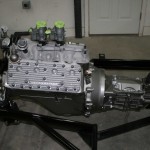
What a Great Look and Feel For This Vintage Atlas Coupe – I Can Hear That Ford Flathead V8 Roar to Life.
The earliest ad we have found so far for the Atlas company is in December 1952, Auto Speed and Sport. This ad identifies only Roy Kinch putting forth the concept of selling instructions on how to build a sports car body using fiberglass. However, in December 1952 Motor Trend – the same month as this ad – Roy Kinch and Mickey Thompson are already shown together selling their Atlas bodied cars – and Bill Burke’s in the picture too. Motor Trend also reports in that same article that a 94″ wheelbase Roadster and a 99″ wheelbase roadster are in the works. Rick D’Louhy and I are still sorting this exact history out.
Burke had started by making an exact copy of the Cisitalia, but it didn’t stop there. Their next version of the car was the same wheelbase but a roadster version. This was finished and Burke’s personal car for awhile was an Atlas/Allied roadster. He even had it on display at the Petersen Motorama in 1954. And….we’ve found larger 99″ coupes, but never 99″ wheelbase roadsters.
My good friend Jim Giles has long thought that the California Sports Special / Mysterion that he used to own was the missing 99 wheelbase Allied Falcon roadster. What a treat that would be if it came to pass, but Rick D’Louhy and I are still looking for confirming information on this topic.
“Glassheads” Forever
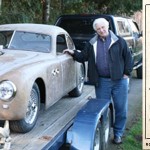
Stan Crawford and his friend and Restorer BJ Zahn Readying the Atlas for Pickup by the Petersen Automotive Museum
My recent interview with Stan about his car ended with him talking about all the “glassheads” out there – his homage to the Wisconsin Green Bay “Packers” or “Cheeseheads”. So…we have a new term – coined by Stan – for our group. “Glassheads”. Add this to Mike Larkin’s “sign off” message….”Glass On” and we’re creating our own new vocabulary gang. Watch out world!
So….for all you “glassheads” out there….I hope you enjoyed the story and I think we all wish Stan and his friend and restorer BJ Zahn great success once restoration begins again later this year.
Glass on gang…
Geoff
——————————————————————–
Click on the Images Below to View Larger Pictures
——————————————————————-
|
Technical Specifications |
|
| Other cars in collection: |
|
| Body |
|
| Designer |
|
| Body Work and Paint |
|
| Upholstery |
|
| Frame |
|
| Suspension |
|
| Front Axle |
|
| Rear Axle |
|
| Driveshaft: (open/closed driveshaft) |
|
| Brakes |
|
| Engine (make/year) |
|
| Carburetion |
|
| Displacement |
|
| Horsepower (estimated) |
|
| Transmission (type/year) |
|
| Dashboard / Gauges |
|
| Steering Wheel |
|
| Wheelbase |
|
| Track/Tread (front/rear) (distance between center line of tires) |
|
| Tire Size |
|
| Wheels / Rims |
|
| Curb Weight | |
| Top Speed (0-60) | |
| Door Configuration |
|
| Special Features |
|
- Early Ad for Atlas Body Appeared in Road & Track, Feb 1953 – Already Shows Roadster Body for 94″ Chassis Available
- Earliest Ad We’ve Found So Far – December 1952 Auto Speed and Sport – No Mention is Made of the Atlas Body – And Only Roy Kinch’s Name Appears
- Burke’s Record Setting Bonneville Car For Sale in January 1954 Edition of Motor Trend
- Burke Liked to Use PBY Aircraft Tubing for the Frames of His Cars – Here’s a Streamliner He Was Building as Shown in Hot Rod – September 1952
- Burke PBY Tube Frame Sandblasted, Reinforced, Triangulated, Rewelded – and Ready to Go!!!
- What a Great Look and Feel For This Vintage Atlas Coupe – I Can Hear That Ford Flathead V8 Roar to Life.
- Stan Really Understands What a “Body Off / Frame Up” Restoration Means
- Stan Crawford and his friend xxxxxxxx Readying the Atlas for Pickup by the Petersen Automotive Museum
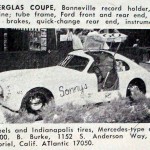
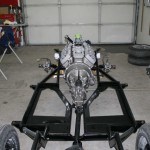

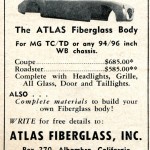
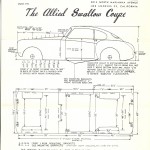
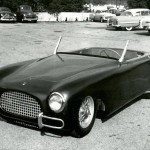
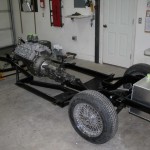
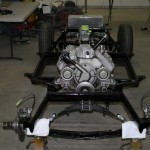
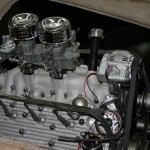
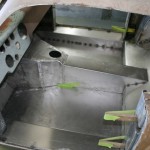
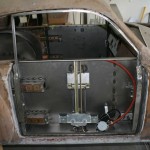
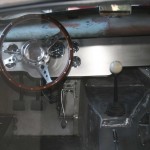
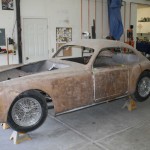
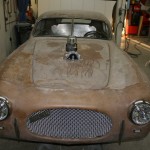
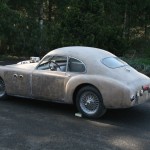
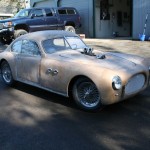
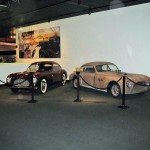
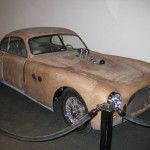
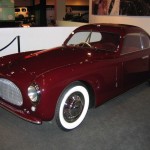
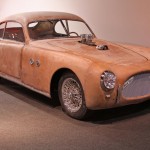
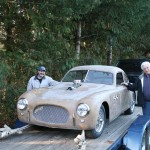
Good site,bet you don’t know this one fiberglass car,owned in Adrian mich 1970. Called a ( lunti launti) two seat fiat motor,some hot shot parts,lights on post stored in cockpit and put in frt hood in receiver holes and pluged in,did talk with and attorney in Ann Arbor his son which is the name source and he helped his dad a pro of auto design at U of M to build I sold it in 1971 local? Any help out their to locate what a story
I LOVE THIS STORY…..THANKS GEOFF! ANYONE KNOW HOW MANY BODIES ATLAS/ALLIED BUILT?